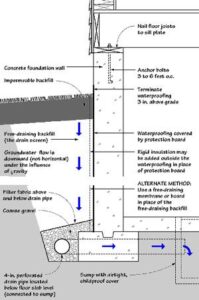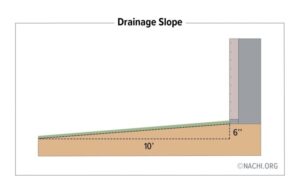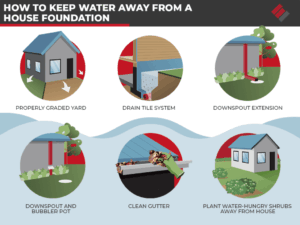Understanding the Scope of Basement Moisture Problems.
Basement moisture issues are more common than you might think. About 40% of homes in the U.S. have basements and 60% of those experience moisture issues.
Common Causes of Wet Basements
Many factors can contribute to a damp basement, including improper grading, poor gutter and downspout systems, groundwater seepage, and condensation from high humidity levels. Sometimes, multiple causes can contribute to the issue.
The Dangers of a Damp Basement
A wet basement can pose risks to you and your family. These include mold growth, structural damage, and poor indoor air quality. These problems can impact your home’s livability and resale value.
Solutions for Controlling Basement Moisture
Several exterior and interior solutions can help control basement moisture and address water drainage and sealant issues.
Improving Exterior Drainage
Proper exterior drainage prevents water from reaching the foundation, helping to keep basements dry and reducing potential damage. One of the first steps in addressing basement moisture is to manage water outside the home:

Extend downspouts: Make sure water from the roof is directed at least five feet away from the foundation.
Regrade the landscape: Slope the ground away from the house to prevent water from pooling near the foundation.
Install French drains: These underground drainage systems redirect water away from the foundation.
Sealing Foundation Walls

Sealing solutions focus on creating a watertight envelope around the basement, preventing exterior moisture from entering your home. For moisture coming through the foundation itself, sealing can often resolve this issue:
To fix a foundation leak from the outside, you can use external waterproofing methods such as sealing foundation cracks with hydraulic cement or applying waterproofing coatings to the exterior walls. It is important to follow the instructions carefully when using these products.

